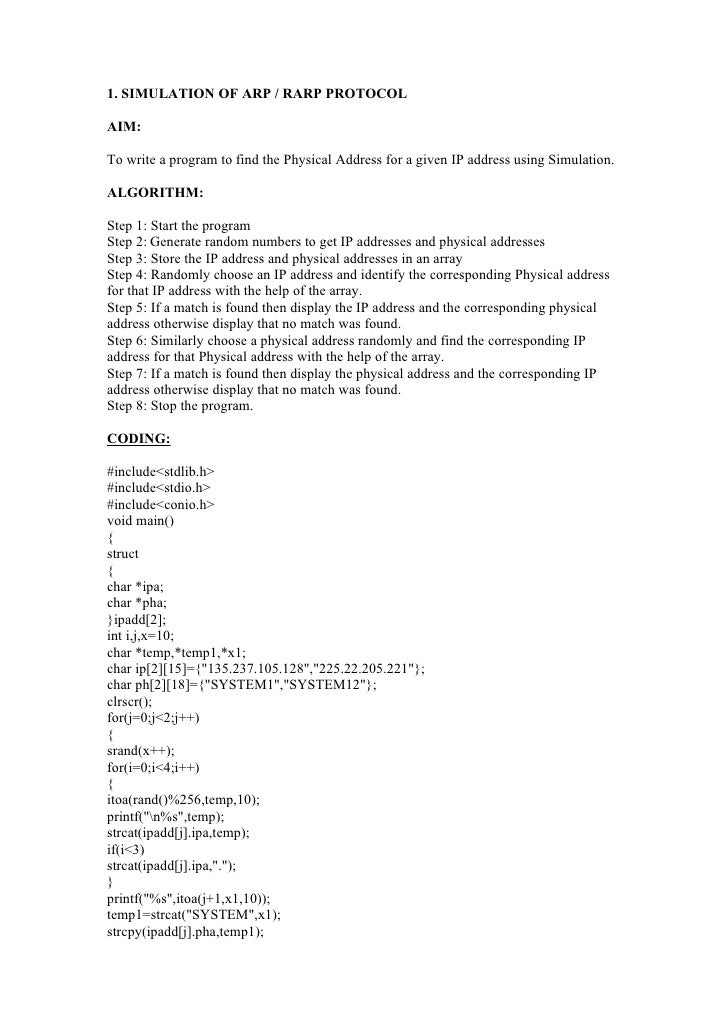- Related Questions & Answers
- Selected Reading
Tags for SIMULATION OF SLIDING WINDOW PROTOCOL in C. Sample c program for sliding window problem; sample network concept related programs; c program to implement sliding window protocol.
- The sliding window information is shown together with the packet information. The above line contains the following information (from left to right): o The lower edge of receiving window is 0 (i.e., the protocol is expecting to receive a packet with sequence number 0), as indicated by 00. Recall that the go-back-n protocol’s receiving.
- If window size is 7 and if prior ACK was for frame 2 & the current ACK is for frame 5 the window expands by three (5-2). Therefore, the sliding window of sender shrinks from left when frames of data are sending. The sliding window of the sender expands to right when acknowledgments are received.
- I am fairly new to java (and programming overall) and have received the task to implement a Sliding Window object from start to finish. The skeleton code is as follows: import java.util.Scanner; //.
- LeetCode – Sliding Window Maximum (Java) Given an array nums, there is a sliding window of size k which is moving from the very left of the array to the very right. You can only see the k numbers in the window. Each time the sliding window moves right by one position.
Sliding window protocols are data link layer protocols for reliable and sequential delivery of data frames. The sliding window is also used in Transmission Control Protocol.
In this protocol, multiple frames can be sent by a sender at a time before receiving an acknowledgment from the receiver. The term sliding window refers to the imaginary boxes to hold frames. Sliding window method is also known as windowing.
Working Principle
In these protocols, the sender has a buffer called the sending window and the receiver has buffer called the receiving window.
The size of the sending window determines the sequence number of the outbound frames. If the sequence number of the frames is an n-bit field, then the range of sequence numbers that can be assigned is 0 to 2𝑛−1. Consequently, the size of the sending window is 2𝑛−1. Thus in order to accommodate a sending window size of 2𝑛−1, a n-bit sequence number is chosen.
The sequence numbers are numbered as modulo-n. For example, if the sending window size is 4, then the sequence numbers will be 0, 1, 2, 3, 0, 1, 2, 3, 0, 1, and so on. The number of bits in the sequence number is 2 to generate the binary sequence 00, 01, 10, 11.
The size of the receiving window is the maximum number of frames that the receiver can accept at a time. It determines the maximum number of frames that the sender can send before receiving acknowledgment.
Example
Suppose that we have sender window and receiver window each of size 4. So the sequence numbering of both the windows will be 0,1,2,3,0,1,2 and so on. The following diagram shows the positions of the windows after sending the frames and receiving acknowledgments.
Types of Sliding Window Protocols
The Sliding Window ARQ (Automatic Repeat reQuest) protocols are of two categories −
Go – Back – N ARQ
Go – Back – N ARQ provides for sending multiple frames before receiving the acknowledgment for the first frame. It uses the concept of sliding window, and so is also called sliding window protocol. The frames are sequentially numbered and a finite number of frames are sent. If the acknowledgment of a frame is not received within the time period, all frames starting from that frame are retransmitted.
Selective Repeat ARQ
This protocol also provides for sending multiple frames before receiving the acknowledgment for the first frame. However, here only the erroneous or lost frames are retransmitted, while the good frames are received and buffered.


Simulation Of Sliding Window Protocol In Java Ide

Simulation Of Sliding Window Protocol In Java
Simulation Of Sliding Window Protocol In Java Developers
